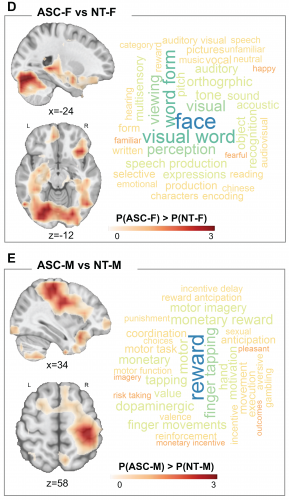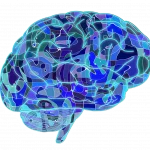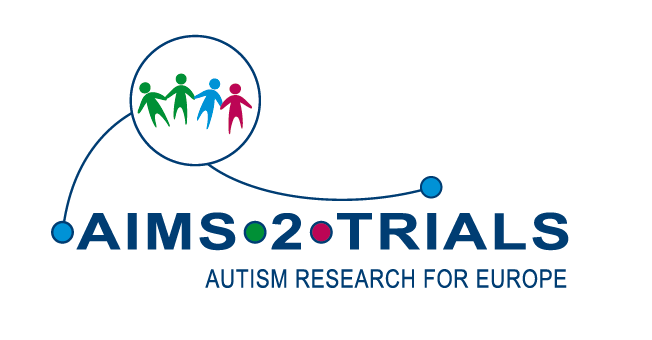Extensive research shows that far more male individuals are diagnosed as autistic, compared to females. This autism ‘sex-ratio bias’ means that around 4 more males are identified as autistic than females. So why is there a higher diagnosis rate for autism in males? Some researchers have shown that this is partially due to autism being easier to recognise in males. However, even taking this into account, studies show that the ratio is still around 3:1, which suggests there may be an underlying biological difference between autistic male and female brains.
Despite being a growing area of study, scientists still do not fully understand the differences between the brains of autistic males and females, versus non-autistic males and females. Previous research had focused on cognitive differences, i.e. how males versus females think and reason. But a recent large-scale analysis, conducted by AIMS-2-TRIALS researchers, has aimed to increase our understanding of the neurobiology (brain biology) of autistic males and females, compared to non-autistic males and females.
Techniques used in the study
The researchers used a relatively new technique called ‘deep learning’ (a type of artificial intelligence or AI) to explore the complex relationships between the structure of the brain and biological sex. Deep learning uses algorithms that mimic the way the human brain works, connecting mathematical functions into an artificial ‘neural network’. Artificial neural networks enable scientists to explore elaborate data patterns and find complex relationships between variables and categorise data.
The first step was to teach the deep learning model to differentiate between male and female brains in non-autistic people. The researchers did this using structural brain images from a large database (UK Biobank) of over 10,000 non-autistic people. These images were taken using structural MRI (magnetic resonance imagery) scans. The model then learnt how to classify these brain images into ‘male’ or ‘female’ categories.
Once the model was trained, the researchers tested new data samples from people that took part in the ABIDE (Autism Brain Imaging Data Exchange) and LEAP (the Longitudinal European Autism Project) studies. These data sets include both autistic and non-autistic males and females. The trained model was used to classify these structural brain images as being from male or female brains. The team then checked the accuracy of these classifications in all four groups: autistic males; non-autistic males; autistic females; non-autistic females.
What the scientists found
 The study showed that the deep learning model was less likely to accurately identify autistic female brain images as ‘female’. In contrast, the researchers found that male autistic brains were more likely to be correctly categorised as ‘male’.
The study showed that the deep learning model was less likely to accurately identify autistic female brain images as ‘female’. In contrast, the researchers found that male autistic brains were more likely to be correctly categorised as ‘male’.
Essentially, autistic females showed structural brain features that more closely resembled the brains of non-autistic males, rather than non-autistic females.
However, these differences in brain classification were not found in people who had an ADHD diagnosis, showing that these results are specific to autism.
The next set of findings involved assigning ‘sex classifications’ at each location in the brain to see whether any specific brain regions were driving these brain classification differences.
They found that the trained model was more likely to classify certain brain regions as ‘non-autistic male’ than other brain regions. For example, the brain maps for autistic females showed that brain regions linked to auditory (hearing) and face processing were more similar to those equivalent brain regions in non-autistic males, rather than non-autistic females. Whilst for autistic males, the regions of the brain linked to motor (movement) and reward processing were more likely to be classified as ‘non-autistic male’ brain regions. These results may highlight an interesting area of future study.
The images labelled D and E (See Right) show different regions of the brain that have a higher probability of being predicted as male by the deep learning model. The word cloud shows which cognitive words are most associated with these brain regions.
What do the findings mean?
From these results, it is clear there is still much to learn about autistic females, and there needs to be greater awareness about the under-recognition of autistic females.
It is important to recognise that these findings do not apply to every autistic person. In fact the results show a great degree of overlap in the brain structures of autistic and non-autistic people. The differences that can be seen are likely driven by differences in a small subgroup of autistic people. At this early stage, more research is needed, for instance to see whether these brain patterns emerge under the age of 6, and how they change for one individual over time.
Looking to the future, if scientists gain a better understanding of the underlying biology of autism in females, then there is a greater chance that clinicians will be able to eventually provide more tailored support for those who want it. The results also indicate it may be helpful to revise the tools used to diagnose autistic females.
Reference: Floris, D.L., Peng, H., Warrier, V., et al. (2023) The Link Between Autism and Sex-Related Neuroanatomy, and Associated Cognition and Gene Expression American Journal of Psychiatry Published: 23 November 2022








